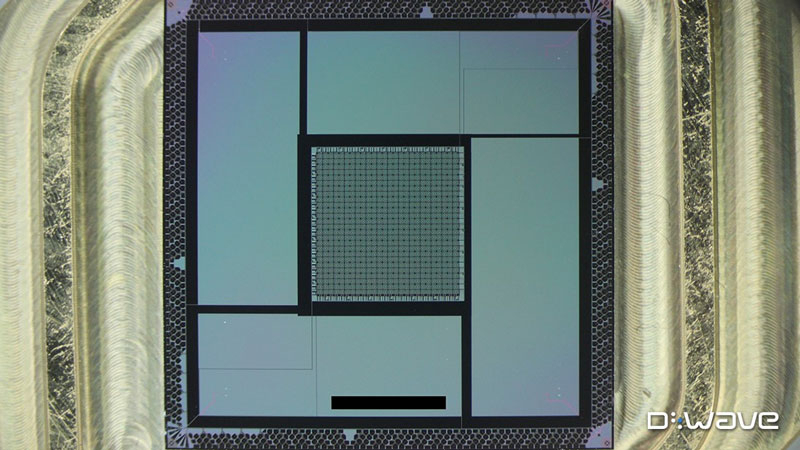Chinese scientists published an article in the national peer-reviewed journal Chinese Journal of Computers in which they reported effective attacks on a number of AES encryption algorithms. The attacks were carried out using a quantum computer from the Canadian company D-Wave Systems. But the main “impact” mechanism was a new mathematical apparatus developed in China. Experts assessed the threat as “real and significant.”

1200-qubit Advantage Generation 2 processor. Image source: D-Wave
AES encryption with keys above a certain length is considered extremely secure today. But this is from the point of view of ordinary computer calculations. Quantum computers and related algorithms hold the potential to crack AES keys effortlessly. It is believed that this will take 10, 20 or even more years. However, there are fears and signs that everything will happen much earlier – in 3-5 years. A group of Chinese scientists from Shanghai University have shown in their new work that a number of the encryption algorithms underlying AES can be compromised by quantum computers.
Using a quantum computer from the Canadian company D-Wave Systems, scientists carried out an attack on the Present, Gift-64 and Rectangle algorithms, which belong to the so-called block encryption Substitution-Permutation network. The code was not completely cracked, as the paper says, but the team of researchers came closer to it than anyone before. The SP network is part of the AES encryption system that is used by the banking sector, government agencies, and militaries around the world to keep their secrets. Even a ghostly threat in this case should be considered as real.
«This is the first time that a true quantum computer poses a real and significant threat to the variety of full-scale structured SPN algorithms in use today,” the peer-reviewed paper states.
The D-Wave Systems quantum computer itself can hardly be called quantum. It uses the principle of quantum annealing – it works on searching for energy minima, which in physics corresponds to the tendency of atoms to the lowest energy state. Everything that remains after processing—“burning”—the data is the desired result. Scientists only needed to create a mathematical apparatus for processing data in the direction they needed. Such a device using AI has been created, but it is not universal and this makes it difficult to practically use quantum platforms today, including for successfully cracking AES keys.